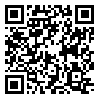Volume 20, Issue 140 (2023)
FSCT 2023, 20(140): 125-140 |
Back to browse issues page
Download citation:
BibTeX | RIS | EndNote | Medlars | ProCite | Reference Manager | RefWorks
Send citation to:



BibTeX | RIS | EndNote | Medlars | ProCite | Reference Manager | RefWorks
Send citation to:
Ghaderi S, Esmaiili M, Mohtarami F, Nouraddini M. Effect of incorporation of beta-glucan and triticale flour on the quality characteristics of sponge cake. FSCT 2023; 20 (140) :125-140
URL: http://fsct.modares.ac.ir/article-7-69659-en.html
URL: http://fsct.modares.ac.ir/article-7-69659-en.html
1- graduated student of urmia university
2- Faulty member of urmia university
3- ۤFaculty member of Urmia Unversity ,mohtarami.f@gmail.com
4- Ph.D. student of food science
2- Faulty member of urmia university
3- ۤFaculty member of Urmia Unversity ,
4- Ph.D. student of food science
Abstract: (759 Views)
In this paper, the possibility of producing sponge cake by replacing triticale flour (TF) (0-30%) and beta-glucan fiber (BG) (0-10%) was investigated by utilizing a two-level factorial design containing central points. According to the results, by increasing TF and BG replacement ratio in the cake formulation, moisture content, water activity, ash, fiber, and antioxidant capacity increased, whereas carbohydrates, calories, and lightness of cases decreased. Moreover, the specific volume of cakes in those samples containing TF decreased, while adding the BG fiber can lead to improving it. Meanwhile, as BG and TF levels increased, the hardness of the samples increased while their cohesiveness and springiness decreased. On the other hand, BG replacement did not have a significant effect on the chewiness and gumminess, whereas TF may lead to increasing them. The overall acceptance of the samples increased with the simultaneous replacement of TF and BG. Furthermore, the numerical optimization confirmed that it is possible to produce enriched and desirable cakes via high utility through a combination of 30% TF and 8.3% BG.
Article Type: Original Research |
Subject:
Cereal and products technology
Received: 2023/06/8 | Accepted: 2023/09/4 | Published: 2023/10/2
Received: 2023/06/8 | Accepted: 2023/09/4 | Published: 2023/10/2
Send email to the article author
| Rights and permissions | |
 |
This work is licensed under a Creative Commons Attribution-NonCommercial 4.0 International License. |









